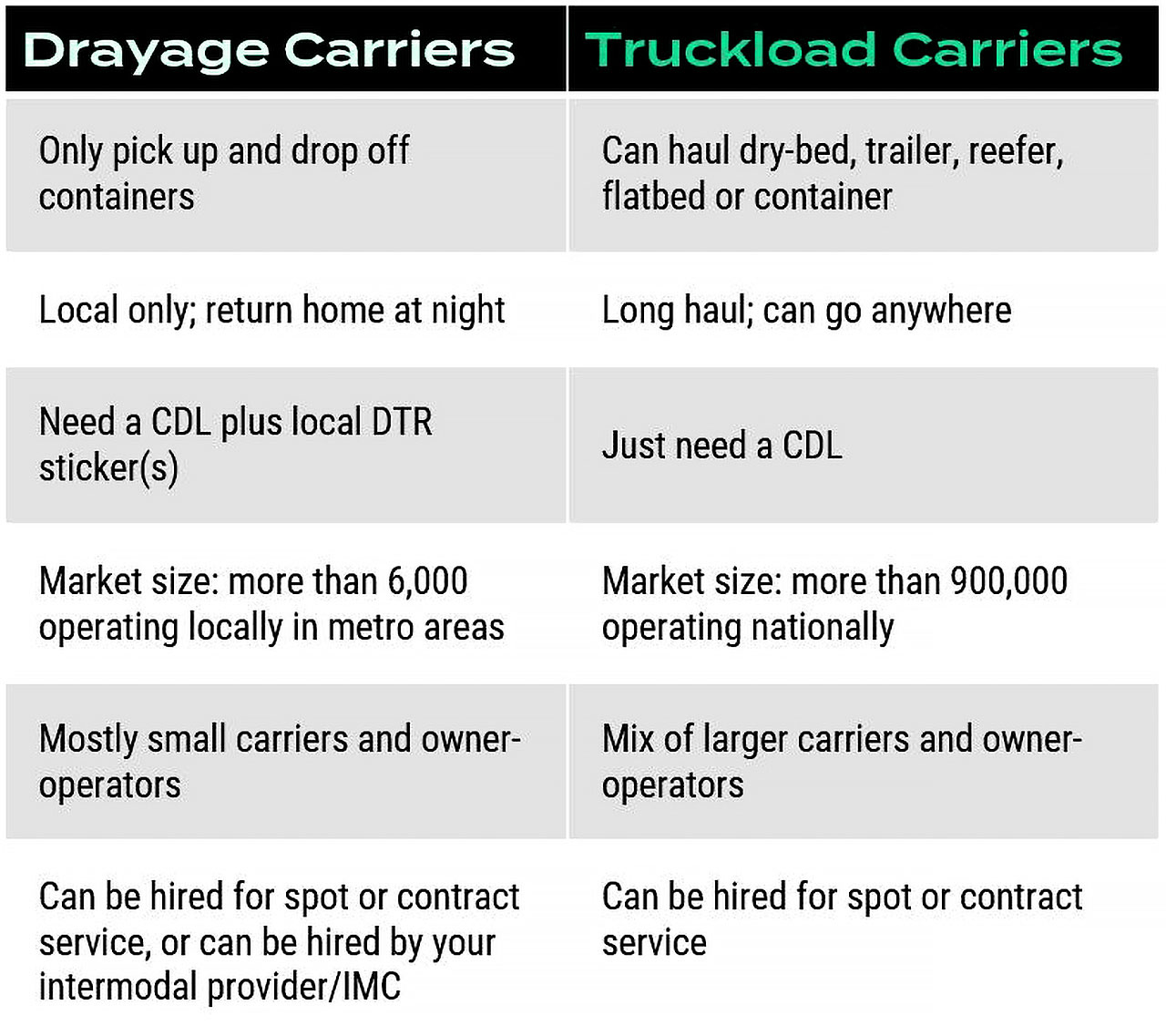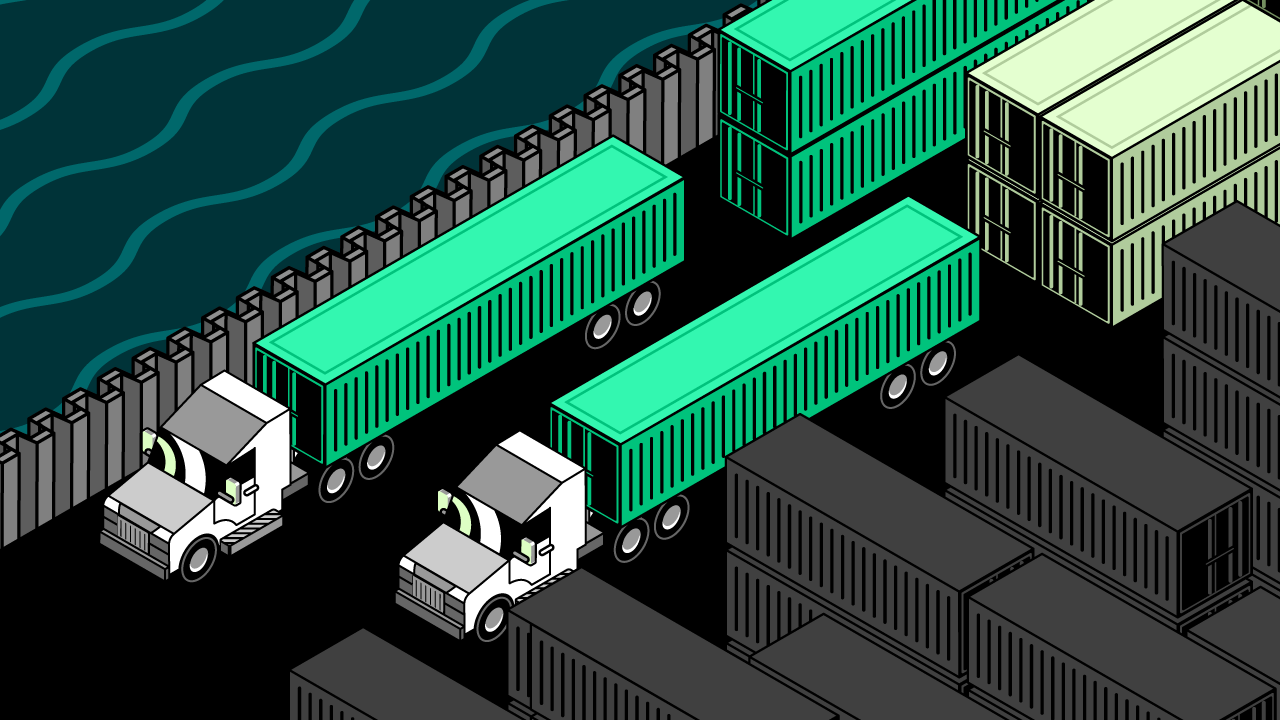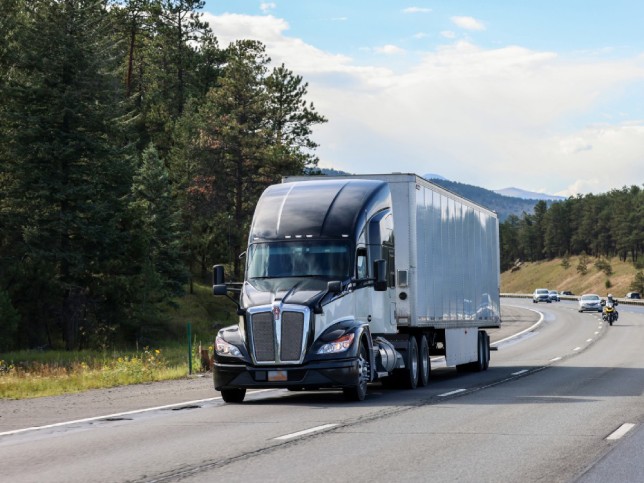It’s called a supply chain, but how often do you focus on its smallest links?
We’re talking about those crucial short-distance connectors: drayage carriers.
They might not haul your freight the furthest, but the miles they cover are some of the most important. If you have freight arriving internationally on a cargo ship, you’re shipping intermodal or both, you need drayage drivers to initiate and complete all of these moves.
Find out what drayage carriers do, where they’re based, how they operate and how to best procure them when you need to.
What Is a Drayage Carrier?
A drayage carrier is a trucking company that specializes in moving containerized freight in and out of ocean ports and/or intermodal facilities (rail ramps).
Drayage carriers typically move freight over short distances between facilities either at the beginning or end of a longer shipment.
Drayage carriers most often:
- Pick up and deliver containers at seaports.
- Pick up and deliver containers at intermodal ramps.
- Shuttle containers between intermodal ramps when they need to switch railroads (called a “rubber wheel interchange”).
- Cross-dock or transload freight from international containers into dry van trailers or domestic containers.
Their role is to move containers over the road that are otherwise being shipped via other modes of transportation. Since you can’t drive a container ship or a freight train up to your loading dock, you need the help of a drayage carrier to complete your shipment.
What Is the Drayage Carrier Market Like?
Because of the nature of drayage driving, it can be difficult to count exactly how many drayage carriers there are in the U.S. in total.
As of this writing, there are more than 6,000 of them listed on aggregator drayage.com’s Drayage Directory, but that number is likely not exhaustive since you have to pay an annual fee to get listed there.
It’s a fragmented market with very little for-hire presence of large national companies. Here are a few statistics that can help you picture the dimensions of this market:
- In 2021, the top four largest intermodal carriers were J.B. Hunt Intermodal, Hub Group, XPO Logistics and Schneider, with revenues ranging from $4.675 billion to $974 million. They move private containers and handle their own drayage operations.
- The largest drayage carrier was Evans Delivery, with a revenue of $812 million. But Evans is not just one drayage carrier, they are a franchise with locations nationwide operating under multiple local carrier brand names.
- The vast majority of drayage carriers are small businesses operating in metro areas with ports and intermodal ramps. There are 623 active drayage carriers in the Los Angeles area alone listed in the Drayage Directory, for instance.
The takeaway here is that the largest carriers moving containerized freight don’t really participate in the drayage market; they handle their own drayage with their own drivers and equipment.
If you’re moving containerized freight through an intermodal marketing company (IMC) or you need a container transported between a port or ramp and your own facility, chances are it will be hauled by one of these smaller carriers.
What Are Drayage Carriers Like?
If you’re starting to suspect by now that drayage carriers are a bit different from truckload carriers, you’re right.
The working conditions and regulations involved in hauling drayage mean that drivers and carriers have some characteristics and priorities that are specific to their unique line of work.
They’re local.
Drayage drivers work regularly daily schedules moving between ports, ramps and facilities in their local area and return home every night. They’re also especially impacted by local regulations, like California’s AB5 labor law.
They need CDLs.
The vehicles that haul drayage chassis are Class 8 tractors. Their drivers need to be appropriately licensed to operate them, even though the hours of service requirement for CDL holders does not really come into play for drayage.
They participate in a large contractual equipment pool.
Most drayage carriers sign the Uniform Intermodal Interchange & Facilities Access Agreement (UIIA). This standard industry agreement lets drayage drivers use chassis owned by railroads or other equipment providers without excessive contractual and insurance hurdles.
They need to register to enter ports and intermodal ramps.
State and local governments issue Drayage Truck Registry (DTR) stickers to drayage drivers and vehicles. These regulate the amount of traffic in and out of ports and ramps and help ensure carriers comply with other regulations such as state emissions standards.
They care deeply about promptness.
Because they operate locally, drayage drivers run on tight daily schedules with multiple pick-ups and deliveries packed into each day. Delays at any one of their stops can cause them to miss a later appointment, which takes money out of their pockets.
They prioritize open communication.
This goes hand in hand with promptness for drayage drivers. If anything comes up that changes or jeopardizes a scheduled pick up or delivery, you need to communicate it as clearly and quickly as possible to help your carrier adjust.
Drayage Carriers vs. Truckload Carriers

How Does Drayage Pricing Work?
You might be used to calculating cost per mile for contract and spot pricing and poring over fuel tables to understand your truckload rate.
But because the distances involved in drayage are relatively small and uniform, the price you’ll pay isn’t really based on miles. Instead, it’s based on time.
Your carrier needs to know exactly how long it will take them to pick up, transport and drop off your container. This impacts how many moves their able to do in a given day and lets them maintain some consistency in their work and revenue.
Your total drayage price will be determined by time and mileage usually expressed as a flat fee for the round trip, fuel surcharges based on the carrier’s fuel costs, and accessorial fees related to the specifics of your shipment.
The accessorial fees associated with drayage carriers are one of the key differences between intermodal and truckload shipping. Some of the common ones are:
- Port congestion fees for freight originating or terminating at a congested port
- Chassis fees dependent on whether your carrier has their own equipment or will rent it
- Overweight fees for freight that exceeds 43,500 lbs. for a 53’ container, 44,000 lbs. for a 40’ container and 38,000 lbs. for a 20’ container
- Chassis splits that cover time spent picking up a chassis from a different location
- Flip fees charged at intermodal terminals when they need to pick a container up off the ground and mount it on a chassis an extra time
- Driver delay charges for shipments that take longer than the “free time” allotted by the carrier
- Pre-pull, for when you need the drayage carrier to transport your container to their own facility and hold it until you’re ready to accept delivery
If your freight is being transported by a drayage carrier as part of an intermodal move, these charges will be factored into the rate you’ll pay to your intermodal provider.
When Are You Responsible for Booking Drayage?
With a market as fragmented as the one for drayage carriers, it can be daunting to try to book one yourself. The good news is, it’s not always your responsibility.
Your provider will handle drayage if you’re shipping intermodal.
If you work with a large private intermodal provider like the ones mentioned above, they will provide drayage for your container at both the origin and destination ends of your move.
If you book intermodal freight through a 3PL or IMC, it’s their responsibility to book the drayage carriers who will haul your container to and from the rail.
Either way, the decision is out of your hands; as long as you trust your provider, you can trust that your container will be in good hands.
You need to book a drayage carrier for local port-to-facility moves.
If you have a container coming off a ship in a seaport and you need to get it to a warehouse or distribution center in the local area, you’ll need to book drayage yourself.
That means either getting in touch directly with one of the likely hundreds of carriers in your area or working with a 3PL who can make those connections for you.
If you’re booking drayage on your own, here are some things to keep in mind:
- Make sure their DTR sticker is up to date and good for the ports and ramps your freight will travel through.
- Choose a carrier who participates in UIIA to have the easiest, most efficient time securing a chassis for your container.
- Communicate your exact container size and weight so your carrier can be sure to bring the right equipment for the job.
- Be aware of the fees they charge for various accessorials (chassis splits and flips, etc.). If your move requires these, you’ll want control their costs as much as possible with your carrier choice.
- Talk to them about which ports and ramps they’re most comfortable working with to ensure they’re best suited to provide the service you need.


